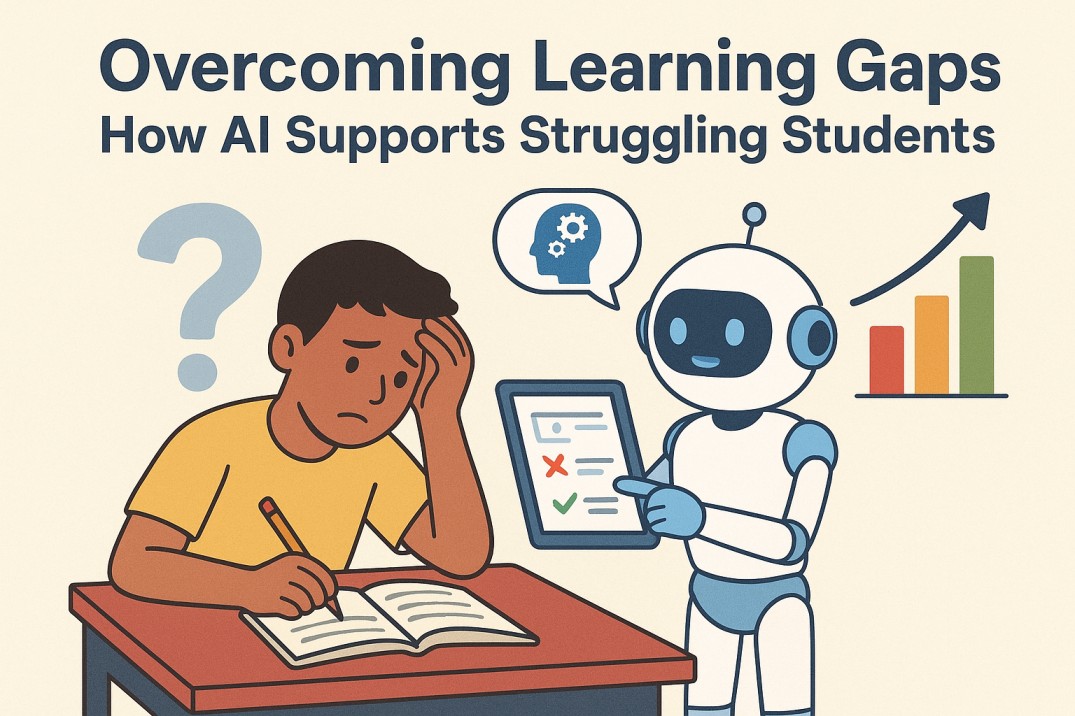
Considering the speed at which education is evolving, addressing learning gaps is one of the biggest issues for teachers to resolve. Learning gaps are areas where learners are behind in fundamental concepts and fall behind. There are many reasons learning gaps occur: learning styles, resource inaccessibility, absenteeism, and subject difficulty. If learning gaps are left alone, the widening gaps will affect confidence, the ability to perform the task in question, and long-term academic achievement.
AI technology has been evolving and provides means to help students. It does not replace teachers, but it does help provide the means to perform the tasks mentioned above.
Understanding Learning Gaps
Learning gaps can often go unnoticed. A student may seem to understand the lesson being taught, but in reality, they don’t have the prerequisite skills mastered. For instance, students who have not mastered fractions will struggle with algebra. The traditional classroom with one teacher and a large number of students often contribute to the difficulty in spotting and providing a response for these challenges.
This is where AI can help, by providing insights based on data and helping learners with personalized adaptive support.
How AI Helps Students Who are Behind
Every student learns at their own pace, consequently, every student should have their own personalized teaching methods. AI use adaptive learning technologies to individualize lesson plans based on the student’s particular needs. If a student struggles with multiplication, the AI can always provide additional multiplication practice before advancing to more complex skills. Students are able to master the fundamentals in order to advance to more complex skills because teaching methods remove the risk of cumulative learning gaps.
An issue with traditional learning methods is the lag in providing feedback. Students often move on to a new topic before the teacher grades their assignments, leading to new learning gaps. Other of feedback AI tools provide correction on assignments, highlight mistakes, and provide explanations instantly, allowing the student to rectify a mistake before moving on. Since students can eliminate mistakes and gaps immediately, their overall understanding of the concept is improved.
Students who struggle often require more time and practice outside of class. They need learning opportunities that artificially intelligent learning programs provide allowing students to access lessons, tutorials and activities at all hours of the day. They have the opportunity to reinforce the skills that are complex and advanced at their own pace without the stress of being judged. Students who are unable to attend school because of an illness greatly benefit from this feature.
Some students are visual learners and some are auditory learners while others learn better through active participation. AI systems are able to accommodate varying preferences by incorporating different media like videos, simulations, and interactive quizzes. An animated explanation of a scientific concept for a visual learner and interactive problem solving for a kinesthetic learner are just two examples of AI accommodated differing learning preferences.
AI can analyze data in a way that even the most experienced teachers may miss. A student who consistently takes longer to work through a particular question may go unnoticed, however, the learning system may flag this. Identifying and addressing learning gaps while they are still small ensures that teachers and parents are able to provide appropriate support.
Ending Remarks
Students will always have learning gaps and that will not be a problem if it is not hindering student progress. AI is now available to assist learners as they close gaps by providing individualized learning plans, resources, feedback, and guidance suited to the student’s developmental stage. When combined with the compassion and professionalism of educators, AI will increase the chances of achieving a balanced educational framework with a vision of providing learning opportunities for all students.